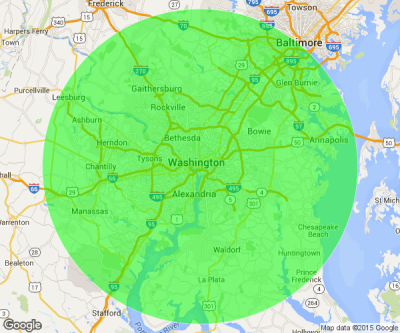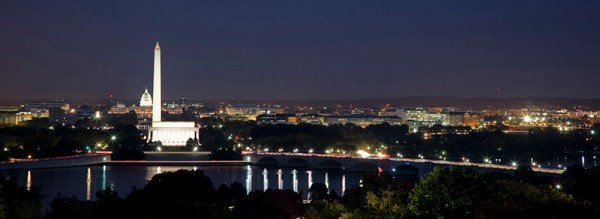In recent weeks, the FAA has solicited input from hobbyists and companies in the ‘drone’ industry, produced rules and regulations, and set up a registration system for all the quadcopters and flying toys being gifted over the holiday season. Whether or not the FAA is allowed to do this is a question being left to the courts, but for now, the FAA has assuredly killed a hobby for more than six million people. The FAA has introduced an updated Temporary Flight Restriction (TFR) for a 30-mile radius around Washington, DC.

Previously, there had been a blanket ban on drones, UAS, and model aircraft within a 15-mile radius of a point inside Reagan National Airport. This point covered the District of Columbia proper, and the suburbs of Bethesda, College Park, and Alexandria – basically, everything inside the beltway, and a mile or two beyond. The new flight restriction for drones covers a vastly larger area – all of the DC metro area, Annapolis, half of Baltimore, and all of northern Virginia. This area encompasses a population of more than six million people.
The DC metro area has, since 9/11, become some of the most complex airspace in the entire country. There are several military bases, Aberdeen proving grounds, the US Naval academy, and of course the White House, Capitol building, and the Pentagon. Even commercial airliners are subject to some very interesting regulations. For the same reason general aviation shuts down in southern California every time the president visits LA, you simply can’t fly model aircraft within the beltway; it’s a security measure, and until now, flying clubs in the DC area have dealt with these restrictions.
The new TFR has effectively shuttered more than a dozen flying clubs associated with the Academy of Model Aeronautics. DCRC, a club with a field in the middle of some farmland in Maryland, has closed down until further notice. The Capital Area Soaring Association has also closed because of the TFR.
Although called a Temporary Flight Restriction, this is a rule that will be around for a while. The FAA says this restriction is here for good.












